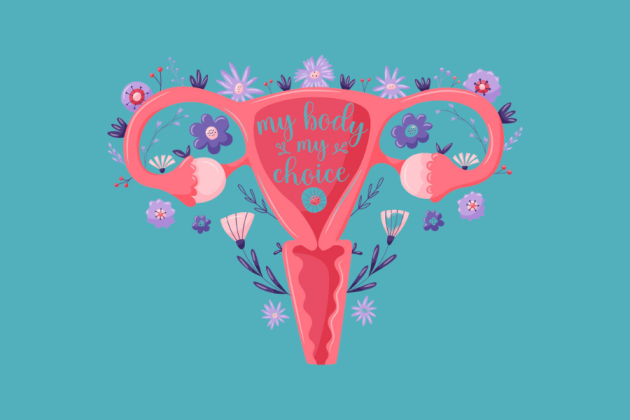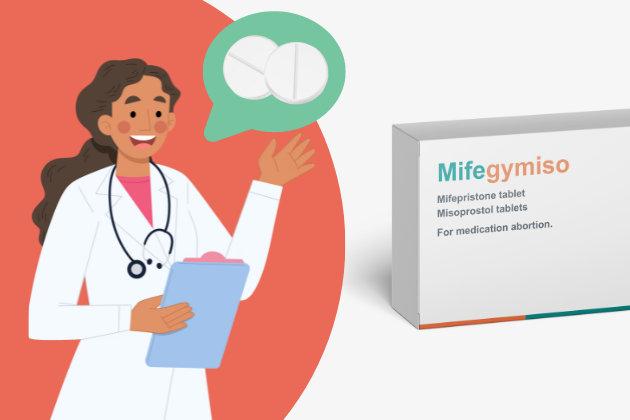
An abortion is a medical process that ends a pregnancy.
Abortion is legal, safe, and common in Canada. Approximately 1 in 3 people who are able to get pregnant will have an abortion in their lifetime. While there is no legal limit to when an abortion can be performed in Canada, different clinics and hospitals have different limits for how far into pregnancy they offer abortions. There are currently abortion clinics offering procedures at 24 weeks gestational age (GA, the time from the first day of your last period) in Canada but only in certain provinces. After 24 weeks, procedures are only available by more specialised referral and sometimes require travel out of the country.
People need abortion care at different gestational ages for a variety of reasons. To find a provider near you or to be connected with a supportive options counselling service call or text our Access Line.
There are two types of abortion:
- Medication abortion (which uses medication).
- Procedural or in-clinic abortion (where a health care provider removes the pregnancy tissue).
Both are safe procedures with exceptionally low rates of complications that do not impact your future chances of becoming pregnant.
Medication Abortion
Medication abortion uses a combination of medications (mifepristone and misoprostol) to end a pregnancy. Health Canada recommends it for use up to 9 weeks from your last period though some providers may offer it later, up to 10 or 11 weeks from your last period, which is in line with international guidelines.
Before having a medication abortion you may be offered a counselling session to make sure nobody is pressuring you to have an abortion. You may get an ultrasound to confirm how far along the pregnancy is and that it is inside the uterus, bloodwork, and other tests.
You need a prescription for this medication. You get the medication from your health care provider or pick it up at a pharmacy.
Asking for an Abortion: A Pocket Guide is an Action Canada resource with facts and tips that may be helpful when asking a healthcare professional for medication abortion.
There are two medications in the box. The first pill, mifepristone, stops the pregnancy from developing further. 24 to 48 hours after you take the mifepristone you take 4 tablets of the second medication, misoprostol, by melting it between your cheeks and gums or inserting it inside your vagina. This causes cramping and bleeding, which expels the pregnancy tissue.
75% of people find the pain associated with medication abortion to be moderately uncomfortable, while 25% of people find it very painful. Your health care provider may prescribe a pain reliever or you can use over-the-counter pain relievers, a heating pad, or other things that help with cramping to provide comfort during the process. The bleeding and expelling of tissue can begin as early as 45 minutes after taking the second medication, and the most intense bleeding and cramping typically lasts between 4 and 24 hours.
It is normal to have bleeding that tapers off and gets lighter over the next 2 to 6 weeks after a medication abortion.
Many providers will have you return to their clinic or go for follow up bloodwork 7 to 14 days after the medication abortion to confirm that the medication abortion worked and all of the tissue came out. Some providers will ask you to do a urine pregnancy test 4-6 weeks after the medication abortion instead. In rare cases (about 2%), not all of the pregnancy tissue is expelled from the body, which means you may need more medication or a procedural abortion to complete the abortion.
Procedural Or In-clinic Abortion
Procedural abortion or in-clinic abortion is done by a health care provider in either a clinic or a hospital.
Before having a procedural abortion you have a counselling session to make sure nobody is pressuring you to have an abortion.
The actual procedure takes approximately 2 to 10 minutes to perform, though you can expect to be at the clinic or hospital for 2 to 4 hours.
Abortions performed in abortion clinics typically use a local anesthetic, where a small injection numbs the cervix (the opening to the uterus) as well as conscious sedation, which is a combination of medicines to help you relax (a sedative) and to block pain (a pain reliever) during the procedure. You will still be awake during conscious sedation but typically will not feel pain during the procedure and may not remember much afterwards. Most hospital abortions use general anesthesia where you are asleep for the procedure.
During the procedure, a health care provider dilates (stretches open) the cervix and gently removes the pregnancy tissue from the uterus using suction and sometimes other medical instruments. There is no cutting or stitching; the procedure is done through the opening to the uterus that is already there.
Costs
Procedural abortion is entirely covered by provincial or territorial health insurance, Non-Insured Health Benefits, and the Interim Federal Health Plan.
Medication abortion (Mifegymiso) is fully covered by provincial or territorial health insurance plans, Non-Insured Health Benefits and the Interim Federal Health Plan. The only exception is with the Government of Nunavut, where most of the patients can access coverage through federal programs
If you are accessing abortion, and you have any of these types of coverage, you should not have to pay out-of-pocket for the cost of the procedure or pills. There are some exceptions to this:
- Some clinics will charge an administrative fee. These costs will vary from clinic to clinic, and you can speak to your provider for more information about their fees.
- If you are travelling outside your home province or territory (see section below).
If you do not have provincial or territorial health insurance, some private insurance plans cover the costs of abortion. If you do not have private insurance, some clinics offer reduced rates for uninsured people, or have programs to help support people in this situation. If you do not have provincial or territorial health insurance and you need help finding support to pay for an abortion, call or text our Access Line.
Travelling Outside Your Home Province or Territory
If you have provincial health insurance and need to travel outside your home province or territory for abortion services, here are some things to consider:
- Procedural abortion: Medical procedures and services are covered by interprovincial billing. If you need to access procedural abortion outside of your home province, hospitals are generally better equipped than stand-alone clinics to support the processing of interprovincial billing.
- Medication abortion: Medications are not covered by interprovincial billing. If you need to access medication abortion (Mifegymiso) outside your home province, you will need to pay out of pocket or rely on private insurance.
Finding a provider
There is a lot of confusing and misleading information online about where to access abortion. To find a reputable abortion provider, visit our online directory, call or text our Access Line, or visit Choice Connect.+
Crisis Pregnancy Centers (CPCs) are anti-choice organizations, most of which are religiously affiliated, that can look like a clinic or a community center. To learn more about identifying CPCs and finding reliable sexual health information online, click here.


